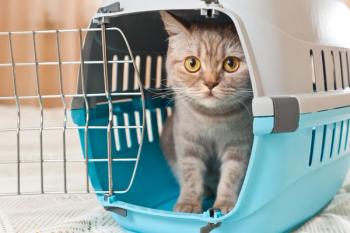
Outlook for sheltered cats deteriorating
Animal shelters in Ohio have reported that since 1996, the number of cats taken in increased by 20 percent, while the number of dogs received decreased by about 16 percent.
Animal shelters in Ohio have reported that since 1996, the number of cats taken in increased by 20 percent, while the number of dogs received decreased by about 16 percent. Euthanasia numbers follow the same trend. The number of dogs euthanized decreased 39 percent, while the number of cats euthanized increased nearly 14 percent. The trends in Ohio are likely to appear in other states, according to the study, "Demographic Trends for Animal Care and Control Agencies in Ohio from 1996 to 2004," published in the July issue of JAVMA.
There are some encouraging numbers from the study. Since 1996, the number of Ohio shelters that vaccinate or spay and neuter their animals rose from 56 percent to 71 percent. And the percentage of animal care and control agencies that have an established partnership with a veterinarian or veterinary practice has doubled—from 40 percent to 80 percent.
Newsletter
From exam room tips to practice management insights, get trusted veterinary news delivered straight to your inbox—subscribe to dvm360.






